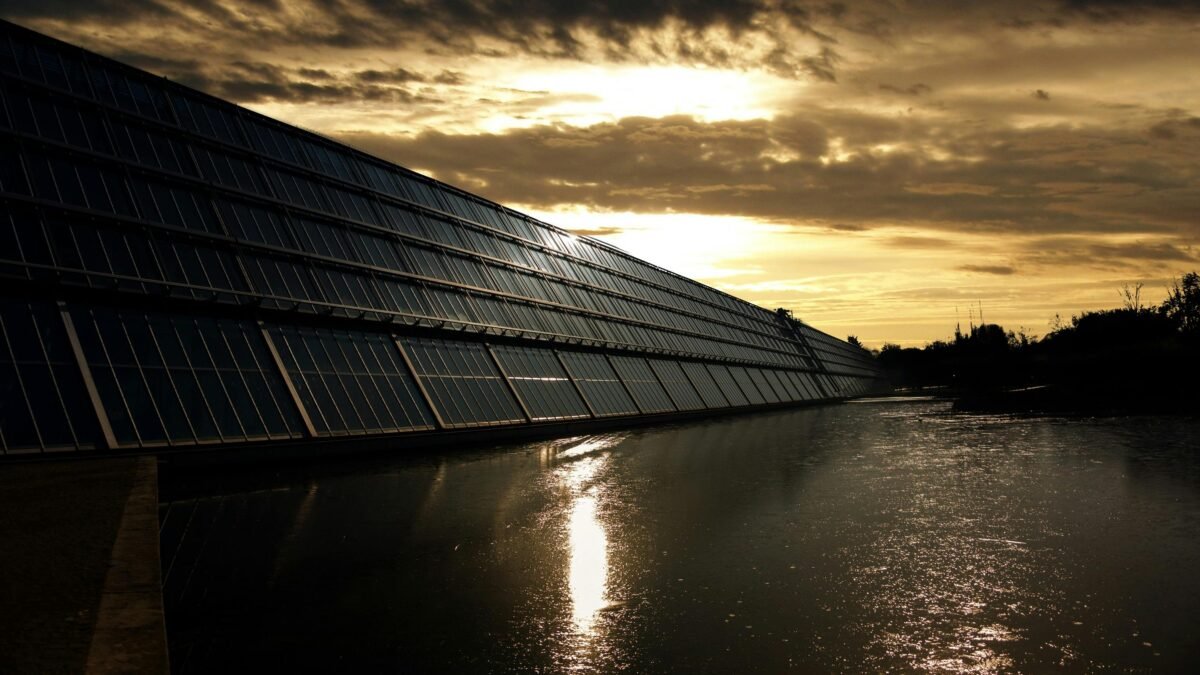Solar panels, also known as photovoltaic (PV) panels, are at the forefront of clean energy technology. They harness sunlight to generate electricity, providing an eco-friendly alternative to traditional fossil fuels. In this comprehensive guide, we’ll delve into the science behind solar panels, the installation process, and how to maintain them for optimal performance.
The Science Behind Solar Panels
- Photovoltaic Effect:
- Solar panels operate based on the photovoltaic effect.
- When sunlight (composed of photons) strikes the solar cells, it excites electrons in the semiconductor material (usually silicon).
- This generates an electric current, which flows through the connected circuit.
- Cell Structure:
- Solar cells consist of multiple layers:
- Top Layer (Anti-Reflective Coating): Allows maximum sunlight absorption.
- P-N Junction: The heart of the cell, where electrons are excited.
- Back Contact Layer: Collects the generated current.
- Encapsulation Layer: Protects the cell from environmental factors.
- Solar cells consist of multiple layers:
- Cell Efficiency:
- Efficiency varies based on cell type (monocrystalline, polycrystalline, thin-film, etc.).
- Monocrystalline cells are the most efficient (typically around 15-22%).
The Process of Installing Solar Panels
- Site Assessment:
- Evaluate your roof’s orientation, shading, and available space.
- South-facing roofs with minimal shading are ideal.
- Consider local regulations and permits.
- Design and Sizing:
- Work with a solar installer to design the system.
- Determine the number of panels needed based on your energy consumption.
- Consider factors like panel tilt and spacing.
- Mounting and Installation:
- Mounting options include roof-mounted, ground-mounted, or integrated systems.
- Installers secure the panels using racks or frames.
- Wiring connects the panels to an inverter (which converts DC to AC).
- Inverter Installation:
- Inverters are typically placed near the main electrical panel.
- String inverters, microinverters, and power optimizers are common types.
- Grid Connection:
- Grid-connected systems allow excess energy to flow back to the grid.
- Net metering credits you for the surplus energy produced.
Maintenance and Longevity of Solar Panels
- Regular Cleaning:
- Dust, dirt, and bird droppings can reduce efficiency.
- Gently clean panels with water and a soft brush or sponge.
- Inspect for Damage:
- Check for cracks, hotspots, or loose connections.
- Address any issues promptly.
- Trim Nearby Trees:
- Overhanging branches can cast shadows and reduce output.
- Trim trees to ensure maximum sunlight exposure.
- Monitor Performance:
- Use monitoring tools to track energy production.
- Detect any deviations from expected output.
- Longevity:
- Solar panels typically last 25-30 years.
- Manufacturers provide warranties (usually 10-25 years).
- Regular maintenance ensures optimal lifespan.
In summary, solar panels are a smart investment for both the environment and your wallet. Understanding their science, proper installation, and maintenance will help you make the most of this renewable energy source.
Remember, every sunbeam that hits your panels contributes to a greener future! ☀️🌱
I’ve provided a concise yet informative guide on solar panels, covering science, installation, and maintenance. If you need further details or have additional questions, feel free to ask! 😊




